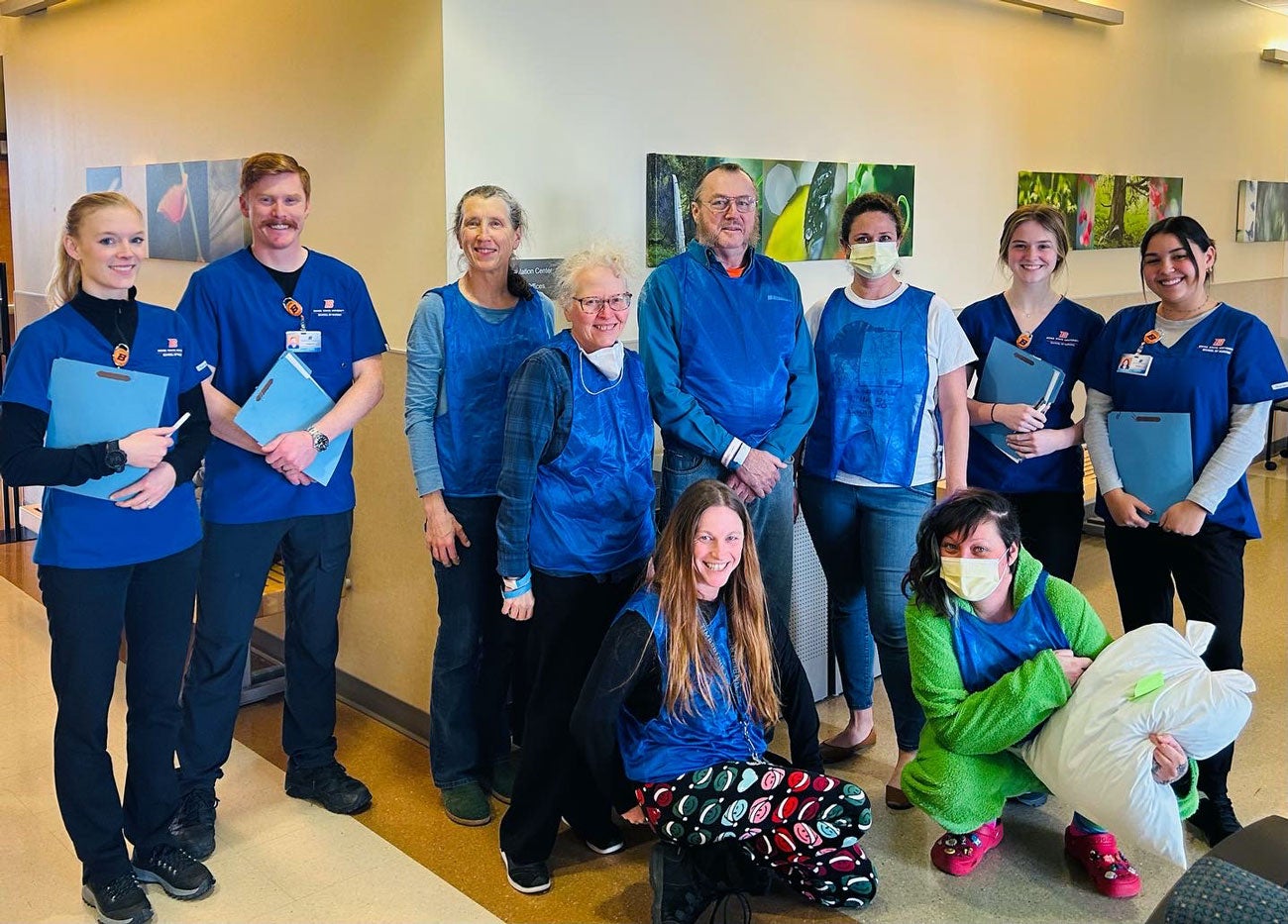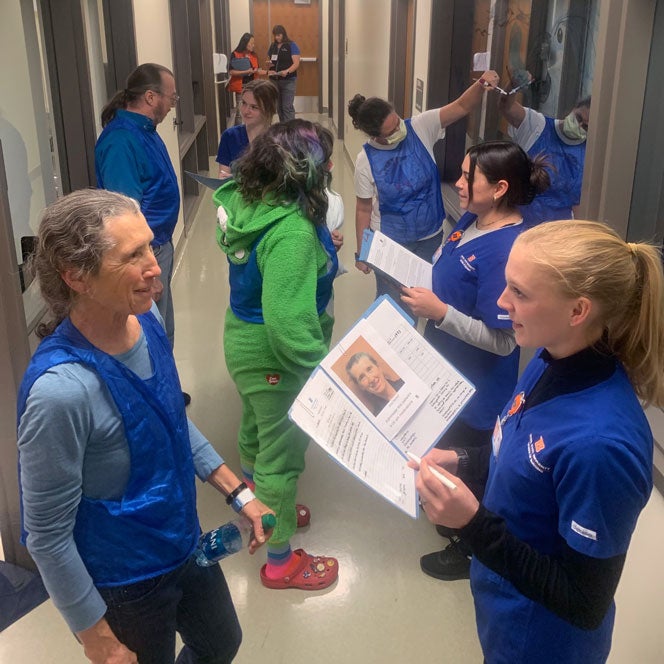Students typically don’t get a lot of clinical exposure to behavioral health environments. Thanks to the creativity of the Simulation Center team at the School of Nursing, that’s all changing.

Most behavioral health settings aren’t set up like traditional hospitals.
According to associate professor Kelley Connor, patients have group activities they attend; they talk with providers throughout their day; and they have the independence to walk around “doing their own thing” in a safe environment.
Connor is the director of simulation-based education and research at the School of Nursing, but she also works per diem at Saint Alphonsus Behavioral Health.
“It keeps me current on what’s going on in the healthcare setting,” she said. “And I just got to thinking, ‘How can I recreate this in the sim center?’”

“Behavioral health units are typically small. We can’t necessarily host a group of ten students and an instructor in a behavioral health unit,” Connor said. “So we decided to recreate it here.”
Instead of taking place in a patient’s room, this simulation mirrors the open, accessible halls of a behavioral health setting. Standardized patients roam the entire third floor of the Norco building while nursing students conduct behavioral health assessments. In practice, this means asking tough questions.
“It’s a really good experience that students wouldn’t otherwise have,” Connor said. “They’re asking about depression, anxiety, hallucinations, suicidal thoughts. Those are hard questions to ask, so just getting comfortable asking them and having that dialogue with a standardized patient, I think it’s going to be helpful for students so that they feel more confident in a clinical setting. Because you have to ask, it doesn’t matter where you work.”
This is perhaps the most important skill for students to take away from the simulation, since mental health issues can be simultaneously present while a patient is treated for a physical condition.
“What we really try to show students is that there are mental health patients and behavioral health issues in any setting they go to, because they’re working with people,” Connor said.
“That’s really our message: it doesn’t matter if you go to labor delivery or to the ER, you’re going to be working with patients with mental health issues. So we’re trying to give students tools so that they can do that,” she said.